28 September 1778 Monday
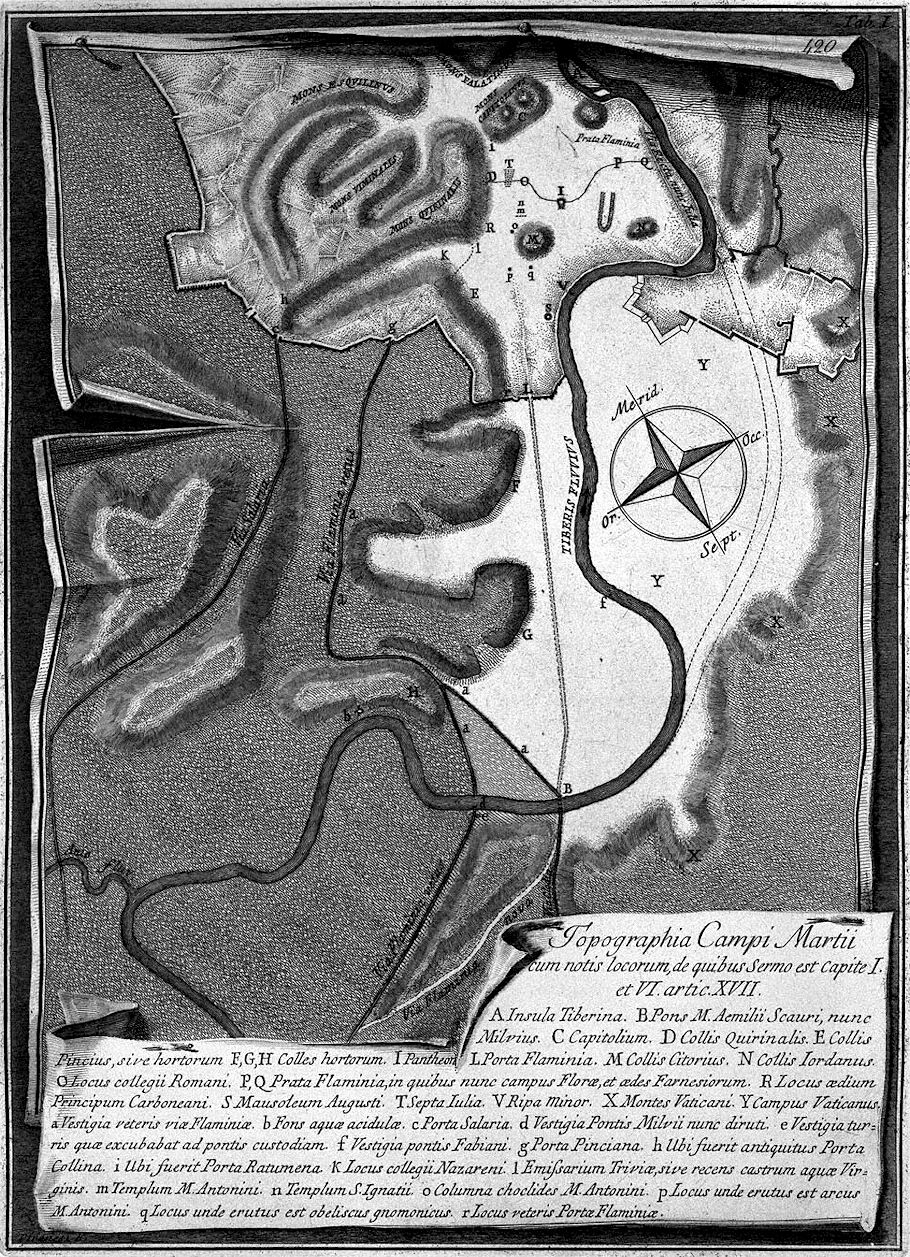
Topographical map of the Campus Martius, 1762.
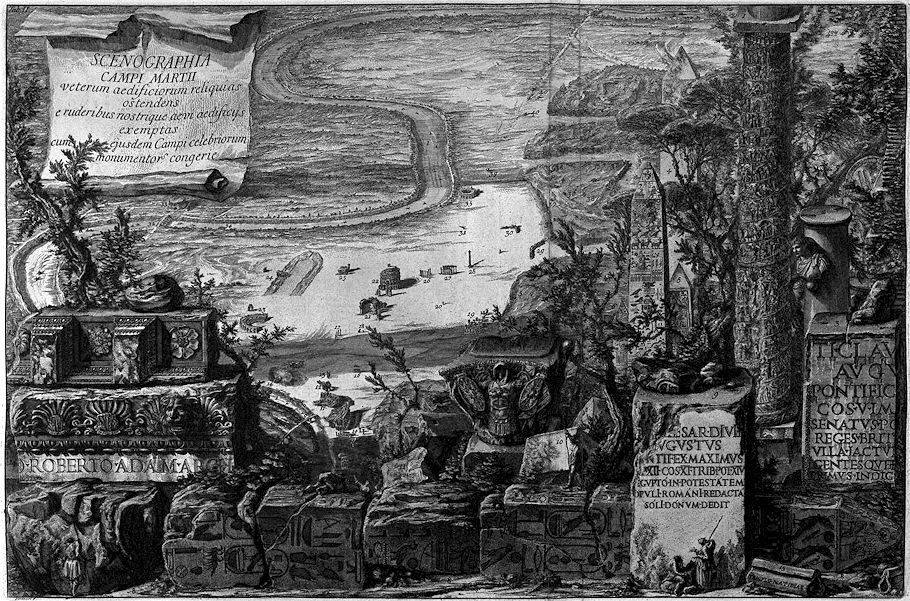
Scenographia [view] of the Campus Martius, 1762.
28 September 1999
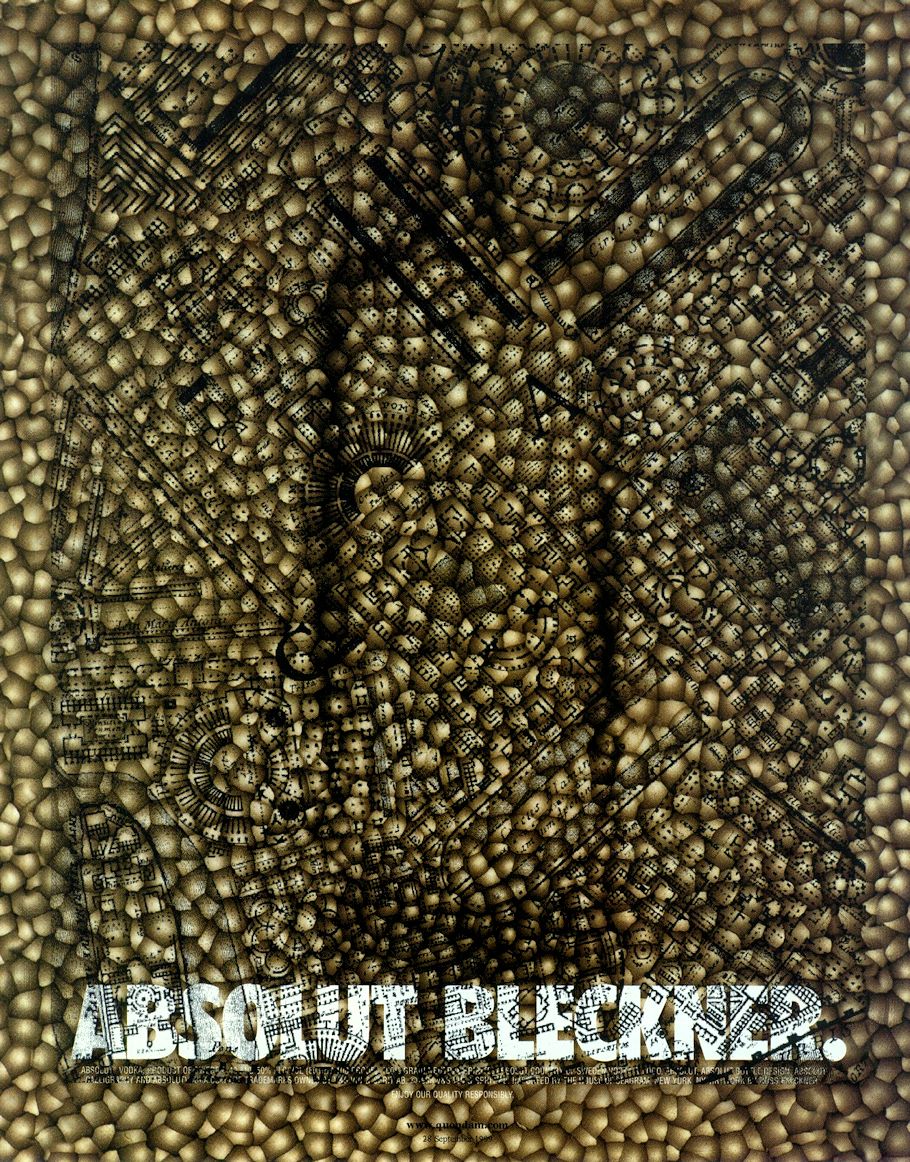
pieces/palimpsest 03
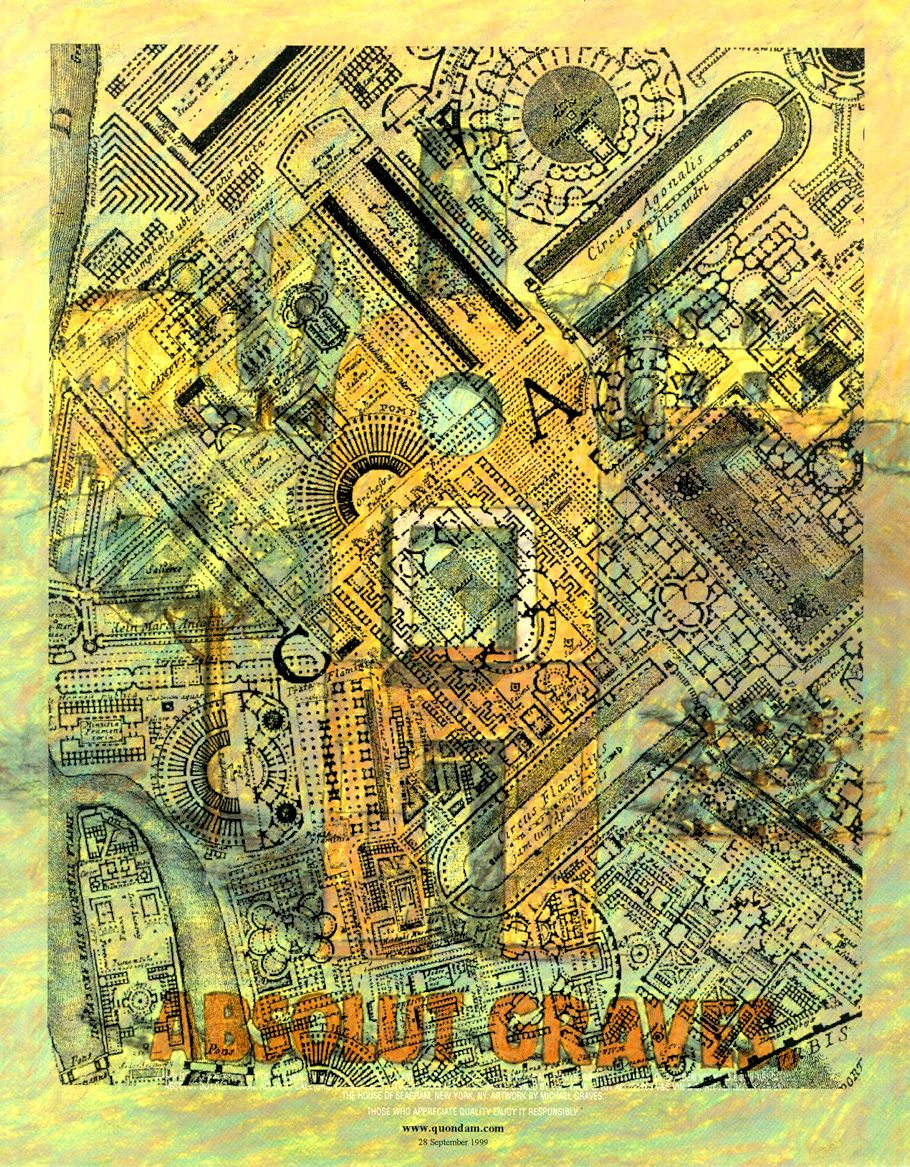
pieces/palimpsest 04

pieces/palimpsest 19
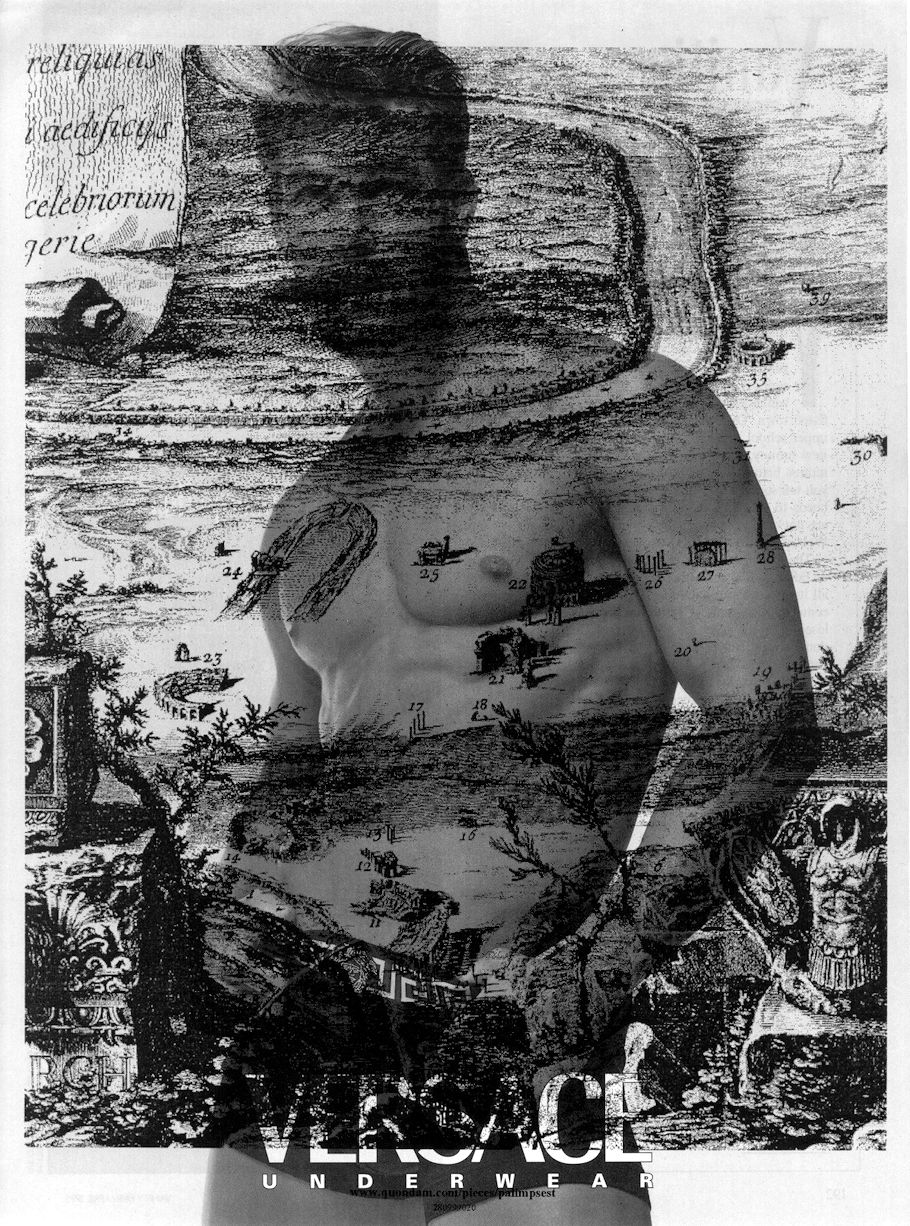
pieces/palimpsest 20
28 September 2003
Re: Good Art
Along with 'calendrical coincidence' and the sort of augury that sometimes seems to dwell there, it is the odd reciprocal relationship between Paganism and Christianity that likewise keeps the interest going. For example, the behind-the-scenes goings on of the 20th century American Roman Catholic Church are not too different than the ritualistic practices of the most licentious Pagan cults (of at least late antiquity). Ironically, while Christianity was being legalized under Constantine, it was then also that the most licentious Pagan cults (and this for the most part meant those with homosexual practices/rituals) were being made illegal.
Helena is credited with 'building' the Basilica of the Nativity and the Basilica of the Ascension (now long demolished and replaced by a mosque nearby). Regardless of the silence of fourth century historians as to Helena having had anything to do with the building of the Basilica of the Holy Sepulcher, her presence in the Holy Land during the same time and as an 'architect' points to her active role at Golgotha as well. (Of course, Constantine as ruling male gets credit above everyone else for doing all this 'architecting' of Christianity.)
The site of the Holy Sepulcher in 325 AD was covered over by a Temple to Venus erected during the reign of Hadrian. Legend has it that the True Cross was found subsequent to the dismantling of the Temple of Venus. It is well known that many early Christian churches incorporated materials, mostly columns, from prior structures. In early 2002, when Palestinian fighters were staked out in the Nativity compound at Bethlehem, I read in Newsweek how six pink columns from the original (Helenian) Basilica of the Nativity are still part of the architecture there. I wonder if those pink columns came from a quondam Temple of Venus.
Re: Quite a reenactor!!!
I see the possibility of Seroux's work being enhanced via HTML in that throughout the text that accompanies each engraved plate there are references from an image or set of images on one engraved plate to other images on another or even several other engraved plates--hyperlinkage could be of benefit here. Moreover, I found that aspects/details of many buildings are distributed throughout the whole set of engravings. For example, a plan of a church may be displayed with other church plans of the same era, but a column from this church is depicted on another engraving that presents a vast variety of columns all arranged in chronological order. The same disbursement goes for details of arches, walls, and domes. In redoing the work utilizing HTML, not only can the work be recreated as originally published albeit with hyperlinks, but whole new 'plates' of drawings can be composed where (for the first time) all aspects of an individual building are displayed together, and these new displays can then be further worked via hyperlinks into the historical outline Seroux already established. I'd also like to add some new text to the Histoire.
Interestingly enough, the drawings (by many top-notch French architectural apprentices that Seroux hired) on which the engravings are based are now at the Vatican Library. And, according to Vidler, the original drawings far surpass the engraved drawings, mostly because the engraved drawings are much reduced from the original size.
My favorite 'discovery' to come out of this exercise so far is learning about the Basilica of St. Stefano, Bologna, thirteenth century, a religious compound where the Court of Pilate and the Church of the Holy Sepulcher, Jerusalem were/are specifically reenacted.
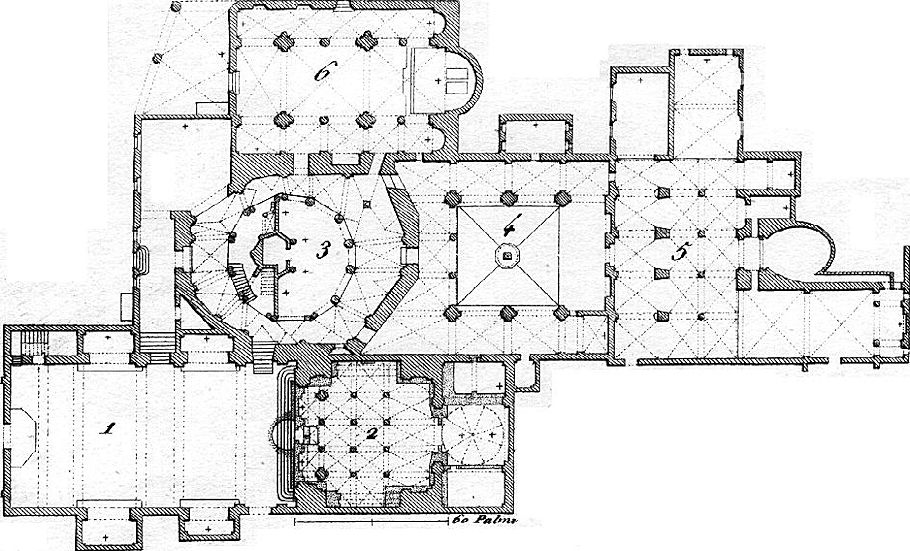
...the Basilica of St. Stefano, Bologna, thirteenth century, a religious compound where the Court of Pilate and the Church of the Holy Sepulcher, Jerusalem were/are specifically reenacted.
The six churches of which the plans are here given, nos. 1 to 6, are thus grouped at Bologna, under the title St. Stephen, the church no. 1, however, being more particularly dedicated to the saint.
2. Subterranean Church of S. Lorenzo, beneath that of St. Stephen, and serving as the Confession.
3. Church of the Holy Sepulchre; according to tradition the baptistery of St. Peter and St. Paul, no. 6, the first cathedral built at Bologna.
4. Another church, called the Court of Pilate.
5. Church of the Trinity.
6. Church of St. Peter and St. Paul.
28 September 2008
On Formalism and Reenactment
"Name any current mathematical, scientific or philosophical theory, and there's an architecture that will try to reenact it."
2007.02.18 15:18
meta, "for years" is stretching it a bit, isn't it?
The Architecture of Nimiety: An Abundance of Redundance in Architectural Education, Theory and Practice
Place the following items in chronological order from oldest to youngest.
a. something original
b. reenactment
c. meme
d. tautology
e. then all of the above as something original
28 September 2022 Wednesday
At 21:32 I thought of an apt subtitle for The Discovery of Piranesi's Final Project: a history making experiment, although ultimately it may not be used.
|